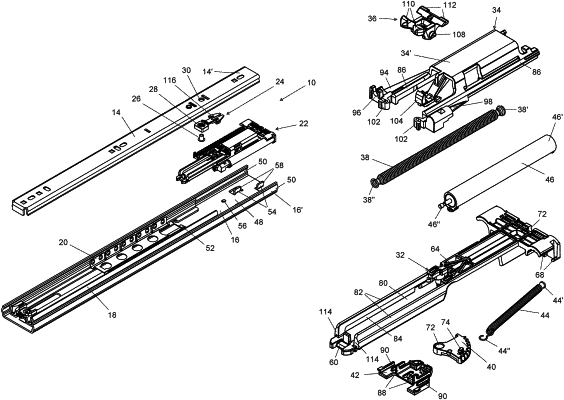| CPC A47B 88/467 (2017.01) | 23 Claims |

|
1. A closing device comprising:
a base;
a rack body slidably coupled to the base and having an elongated rack having a toothed section;
a catch pivotally coupled to the rack body;
a first biasing member connected at a first end to the base and at an opposed second end to the rack body, and biasing the rack body to move rearward relative to the base;
the catch having a locked position at a front of the base, and an unlocked position wherein the catch is movable along the base while being biased toward the rear of the base;
a gear having an arcuate toothed section and being pivotally coupled to the base and engaging the toothed section of the elongated rack of the rack body during a first portion of movement of the rack body relative to the base;
a second biasing member having a first end coupled to the base and an opposed second end coupled to the gear, and biasing the gear to pivot and thereby drive the rack body rearward relative to the base during the first portion of movement of the rack body relative to the base; and
wherein during a second portion of movement of the rack body relative to the base the toothed section of the gear is disengaged from the toothed section of the elongated rack so as to remove the biasing via the second biasing member;
wherein the first biasing member provides a substantially linear biasing force upon movement of the rack body relative to the base, and the elongated rack and gear toothed engagement provides a mechanical advantage that alters the biasing force applied to the rack body by the second biasing member in a non-linear manner during the first portion of movement of the rack body relative to the base while no biasing is applied by the second biasing member during the section portion of movement of the rack body relative to the base.
|